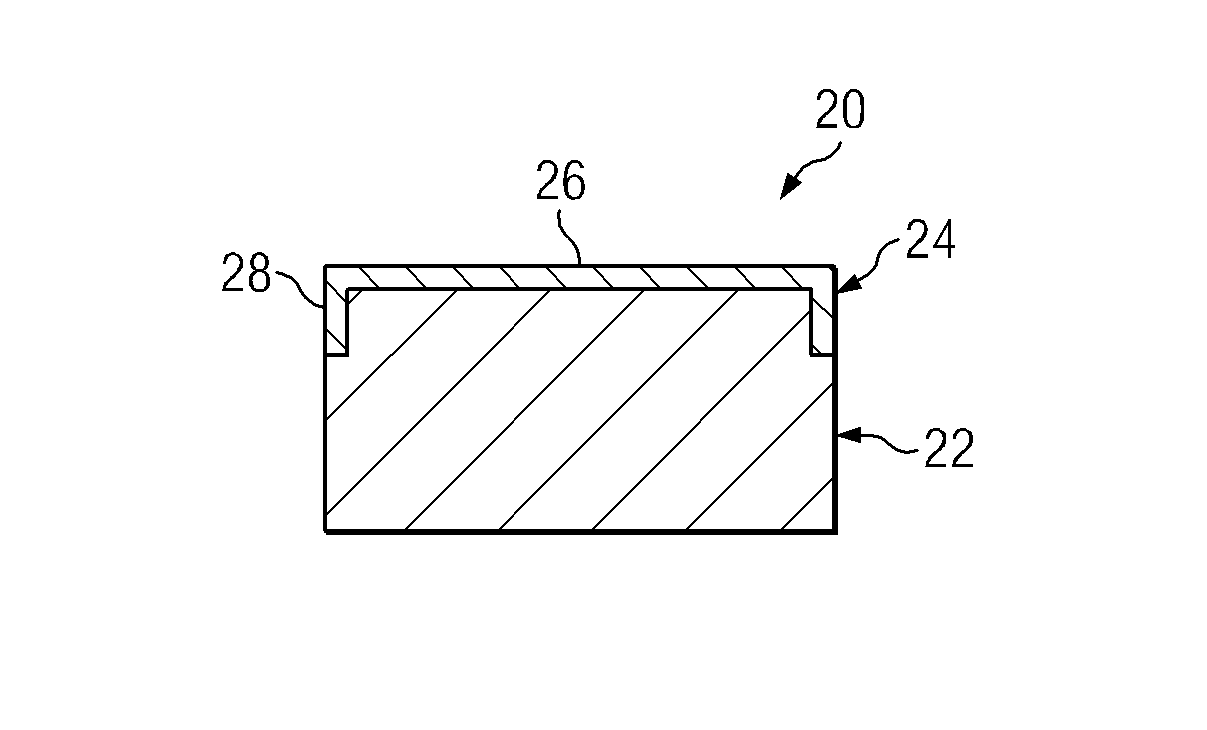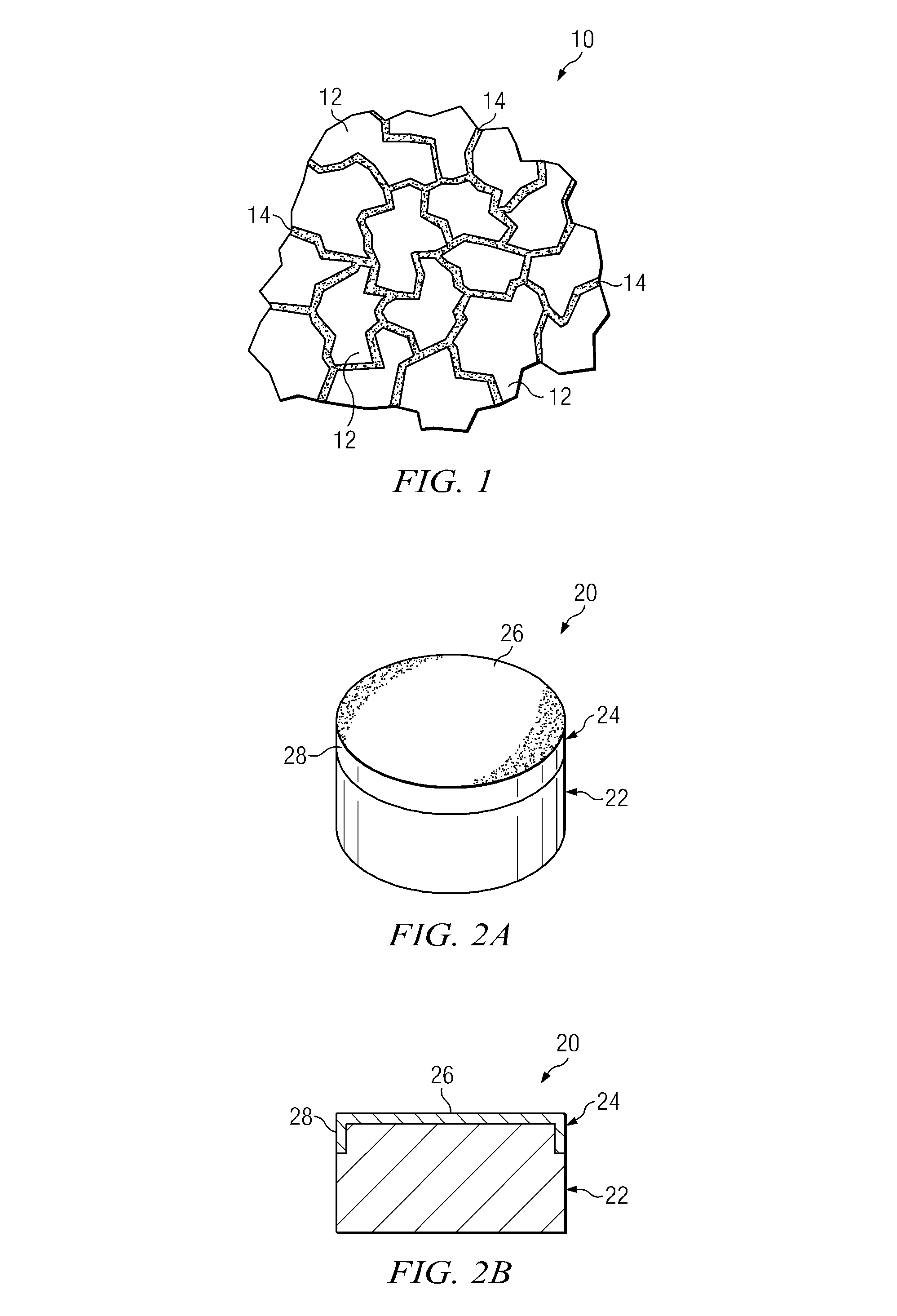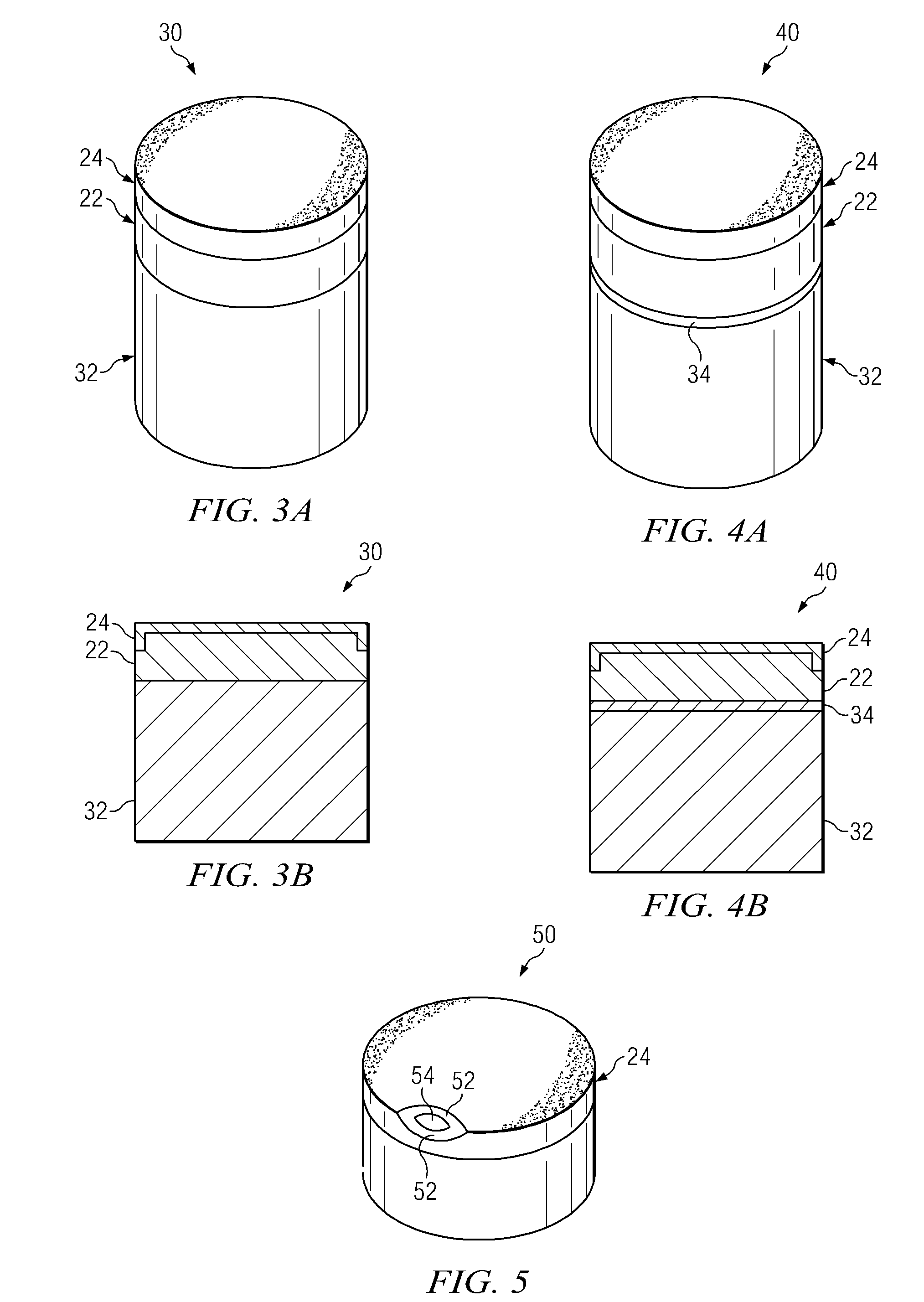Ultra-hard composite constructions comprising high-density diamond surface
a composite construction and diamond surface technology, applied in the field of ultra-hard composite constructions, can solve the problems of diamond-to-diamond bonding rupture, thermal degradation, cracks and chips in the pcd structure, etc., and achieve the effect of improving thermal and/or mechanical properties and facilitating the attachment of the resulting construction
- Summary
- Abstract
- Description
- Claims
- Application Information
AI Technical Summary
Benefits of technology
Problems solved by technology
Method used
Image
Examples
example substrates
[0051 useful as both a source of the reactant material and for providing a desired attachment member include ceramic materials, metallic materials, carbides, nitrides, carbonitrides, and cermets, that include one or more of the reactant materials described above.
[0052]Substrates useful for forming ultra-hard composite construction compacts of this invention, that are not also used as the source for the reactant material, can include those materials used as substrates for conventional PCD and thermally stable PCD constructions, e.g., cermets, carbides, nitrides, and the like. Such substrates can be attached to the ultra-hard body by HPHT process, or by other techniques such as by brazing, welding, microwave sintering, or the like. In the event that the substrate includes a solvent metal catalyst material, it may be desired to attach the substrate to the ultra-hard body by brazing or other such technique, or use an intermediate material between the diamond body and the substrate for a...
first embodiment
[0053]FIGS. 2A and 2B illustrate a first embodiment ultra-hard composite construction 20 of this invention. Generally speaking, such construction 20 comprises an ultra-hard body 22, e.g., formed from the diamond material described above. The diamond body can be provided having a number of different shapes and sizes, and in the example embodiment is provided in the form of a disc-shaped body having a given diameter and a given thickness. While the ultra-hard composite construction is illustrated as having a certain configuration, it is to be understood that ultra-hard composite constructions of this invention can be configured having a variety of different shapes and sizes depending on the particular end-use wear and / or cutting application.
[0054]A feature of ultra-hard composite constructions of this invention is that the ultra-hard body 22 includes a region 24 that has a high diamond density. In an example embodiment, this region 24 is positioned on the body to form a surface portio...
PUM
| Property | Measurement | Unit |
|---|---|---|
| thickness | aaaaa | aaaaa |
| thickness | aaaaa | aaaaa |
| thickness | aaaaa | aaaaa |
Abstract
Description
Claims
Application Information
 Login to View More
Login to View More - R&D
- Intellectual Property
- Life Sciences
- Materials
- Tech Scout
- Unparalleled Data Quality
- Higher Quality Content
- 60% Fewer Hallucinations
Browse by: Latest US Patents, China's latest patents, Technical Efficacy Thesaurus, Application Domain, Technology Topic, Popular Technical Reports.
© 2025 PatSnap. All rights reserved.Legal|Privacy policy|Modern Slavery Act Transparency Statement|Sitemap|About US| Contact US: help@patsnap.com



